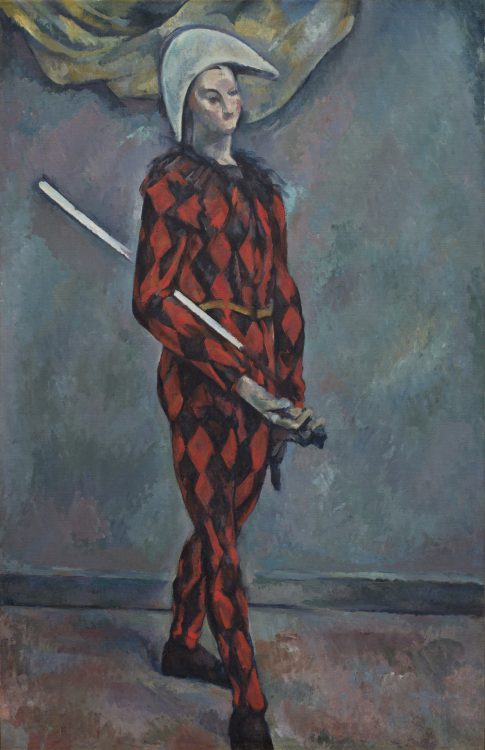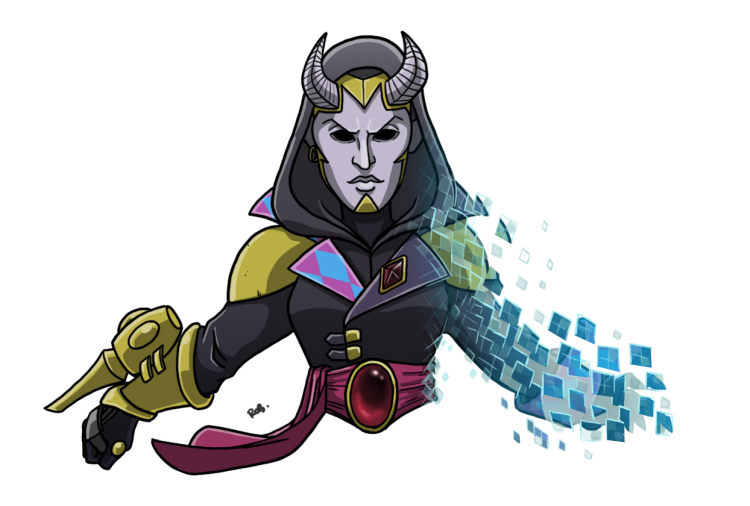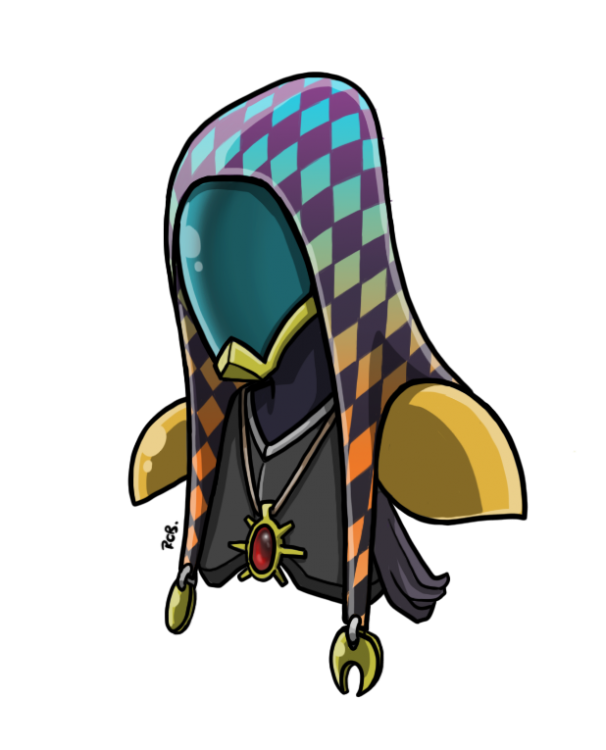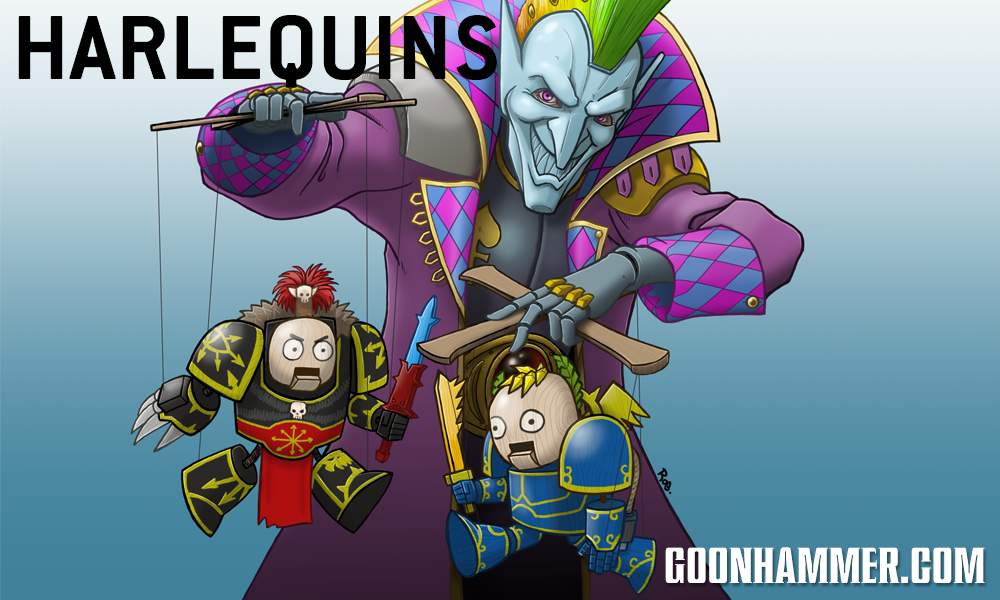With a new batch of rules updates comes the need to revisit the strategies and tactics of each faction. This week we’re kicking off our series of Arks of Omen Faction Focus articles by looking at Harlequins, who were perhaps the hardest hit by the changes.
Welcome to a new year and a new system as both 2023 and Arks of Omen are upon us! Following in the footsteps of last year’s WarZone: Nephilim, the new Arks of Omen mission pack again brings dramatic changes to the 40k metagame with new army construction rules and mission secondary updates. Along with Arks of Omens, the simultaneous release of the 2023 Munitorum Field Manual and 2023 Q1 Dataslate adds further complexity to the rapidly evolving landscape. To help make sense of it all our team has been working hard on a new series of Faction Focus articles.
In this article James “Boon” Kelling will talk about what’s new and what it means for the Harlequins. He will discuss what changes have impacted the faction, what it means for playing them, how he believes they will fare in the Arks meta, and a list idea and some thoughts on playing them.

The Competitive Context
Ever since their re-release with the Aeldari codex in February 2022, the Harlequins have been problematic. Out of the gates they rocketed to near-80% win rates on the back of underpriced Voidweavers, Starweavers, and the Light Sadeath. As a faction, they have frankly never looked back. Harlequins have been addressed directly in nearly every dataslate since release but the updates have continuously struggled to bring the faction into line with the stated target of a 45-55% faction win rate. Piecemeal changes to their Light and Dark faction traits, warlord traits and pivotal roles, significant points updates, and even a change to the core faction ability have all been attempted. Despite it all, Harlequins remain nearly peerless at the top of the competitive heap with a win rate in excess of 57% and continue to place well in most tournament formats. Suffice to say, heading into Arks of Omen we expected to see yet another round of rebalancing focused on bringing the clowns closer to average.
What Changed
The series of updates don’t bring a massive pile of changes that impact Harlequins directly, but the few changes that have been made are deeply significant. I’ll first list out these changes, then we’ll discuss what they mean for the army and how it will play.
Arks of Omen
- Force organization changes allow for more Troupes and Starweavers at no Command Point (CP) cost
- Battle brothers allow Harlequins to ally without breaking Strands of Fate or Power from Pain (Travelling Players) – this is unchanged from Nephilim but has been reaffirmed.
- Strategic reserves do not cost CP
General Secondaries
- Assassination, Grind Them Down, and Behind Enemy Lines now grant a bonus CP for completing the secondary with a Troupe (ha) unit involved
- Psychic Interrogation increased cast value by one (to 5). In addition, the interrogating psyker must be visible from an opponent’s character.
- Behind Enemy Lines now scores 3 VP for one unit
- Engage on All Fronts no longer has a center of battlefield restriction and now scores all four table quarters if a unit is more than 3” from another table quarter (instead of 6”).
Harlequins Secondaries
- Weave Veil increased cast value by one (to 4)
- A Deadly Performance requires a CORE unit to score in an opponent’s deployment zone
Q1 2023 Dataslate
General
- Aircraft now start the game in reserve and cannot drop bombs in a turn they fly off the board
- Armor of Contempt has been removed in all instances
- Imperial Guard no longer ignore the Indirect Fire weapon modifiers
Harlequins
- Reverted to the original wording of the Mirror Architect pivotal role
- Reverted to the original wording of the Favour of Cegorach warlord trait
- Worsen the invulnerable save in every instance of a Harlequins unit by 1 (a 4++ becomes a 5++). This also applies to the Prismatic Blur stratagem and things like the Starmist Raiment
2023 Munitorum Field Manual (MFM)
- Harvester of Torment (Pivotal Role) +25 points
- Mirror Architect (Pivotal Role) +35 points

What It Means – Army Construction and Secondaries
Oh boy, I must be honest that when I first saw the changes here I was a bit taken aback by how radical the invulnerable save change was but I gave it some consideration anyway. However, the longer I thought about the full context of the aggregate updates, the more disappointed I became at this set of changes. I’m going to be blunt in this review; it is very clear to me that Games Workshop has no idea what the problem is or was with Harlequins (and they were a problem), or are unwilling to dedicate the effort to fixing them. It’s not just the pursuit of a light touch; they seem at a complete loss for what makes Harlequins tick.
If you’re seeing the invulnerable save change and are upset about it, well, you have every right to be upset. The change lacks any nuance, but here is the thing, Harlequins will still be good. Despite this, they’ll still have a lot of play. However, the impact of the change is that they will become so one-dimensional, so boring that you just won’t want to play them. Since there’s so few datasheets in the army, let’s just look at what this dataslate change means for each:
- Troupe Master: Retains all the killiness of previous incarnations but has absolutely zero chance of living past his initial strike. You better hope you kill what you’re targeting because on a T3, 5++ body it’s not even clear he’ll survive the clapback. You can pop him back into a Starweaver, of course, to delay his demise half a turn.
- Shadowseer: Possibly the only HQ you’re taking. The -1 to wound aura is going to be critical to survival since you cannot rely on invulnerable or rerolls and you’ll likely need to double up to ensure scoring on psychic secondaries.
- Solitaire: I think more than anything the Solitaire shows just how ill-considered this change is. What is the value of a 110-point character whose sole role is to go kill something soft from a mile away and survive long enough to be a problem? Remember, the Solitaire cannot ride in transports, isn’t particularly well equipped to kill anything bigger than heavy infantry, and previously relied on a rerollable 3+ invulnerable save to become a problem. Well, he now has a 4+ invulnerable at best and with the changes to Luck dice still in place, its debatable whether he’s getting a reroll. Either way, he’s not surviving the next turn and for 110 points I cannot imagine why you’d consider him in your list.
- Death Jester: Probably. It never relied on the invulnerable to stay alive but rather rode around in it’s trusty Starweaver chariot and merrily plunked away at range. The dataslate brings back the original Warlord Trait that allowed him to be a super sniper so it’s possible you’re bringing him along for shenanigans, but it’s also far more expensive at 110 points.
- Troupes: You only have one infantry, non-character option and here they are. You’re still bringing them, they’re still your main unit, and they still want to be riding in transports – now more than ever. They get boosted somewhat by the general secondary changes which can award you additional CP.
- Skyweavers: Everything you’d want to do with these you’d just do with Troupes and Starweavers. At 45-55 points a pop there’s not much reason to consider them under a 5++ and most of the benefits and synergies they’d gained at release have been long since stripped away. They’re not bad generally speaking, they’re just not good relative to your alternate option. You might consider a single squad of two just to nab the deployment zone in A Deadly Performance, but it’s not a cheap option.
- Voidweavers: Still suffering under the yoke of their massive 130 pointing following their ill-conceived release. You may have considered 2 or 3 previously but ask yourself how hard it is to kill something that is T5 with 6W and a 5++. Even with the datasheet rules it’s going to fold rapidly under any dedicated shooting and at that price you’re losing a too-large chunk of your army that could have been better spent moving somewhere quickly and then just sitting there scoring points before dying.
- Starweavers: Still the staple transport to go with your staple Troupes. Frankly, you’re probably taking even more than you did before with the Arks detachment which is good because they’re far more vulnerable than they were before.
It’s hard to understate just how blunt the invulnerable change is – there’s no exceptions for characters, relics, or stratagems – it’s all encompassing, and it filters any diversity out of a Harlequin list which was already low on options. Practically, in most instances, you are now failing 33% more saves than previously. A one-third drop in your survivability with no rollbacks on the previous Luck dice change that may have made this all a bit more palatable (a rerolled 5++ will pass on average 55% of the time).
One bright spot is that the secondaries for the army have not notably changed – Weave Veil has gone up on its initial cast by 1 which means that by turns 4 or 5 you are more likely to fail – realistically you’re planning for a 9-12 on here. It’s certainly not bad, but you might consider Warp Ritual combined with Twilight Pathways instead. Given the nature of the psychic secondary, it means that the Shadowseer is your first pick, and then probably your second. Around that you’re looking at your great bounty of options and picking Troupes. All of them. And since Arks of Omen allows you to take 12 now with no CP costs, you’re probably looking at least 8, maybe 10 or more. Then of course you’re going to need to give them protection since T3 models with one wound and a 5++ save won’t tend to survive much of, well, anything. Which means you’re putting these in Starweavers. So congratulations – three datasheets with near-identical loadouts and your list is built. Maybe you add a Death Jester for some flavor. You’re probably taking Behind Enemy Lines, A Deadly Performance, then Weave Veil or Warp Ritual and your entire game plan is based on simply moving forward and taking or retaking one objective per turn. And I guarantee it will still score very well. It will, I promise. It just won’t be very fun or thrilling.

Playing Harlequins in the Arks of Omen Meta
Because the Harlequin scoring relies so much on simply moving onto an objective, board center, or the opponent’s backfield, and because there’s effectively no reason to take anything that isn’t just maximizing movement and durability, your planning is fairly opponent agnostic. The Armor of Contempt change means your Shuriken Cannons and combat swings are going to put through more damage into some armies, but really, it’s irrelevant. Your entire game plan is built on passive scoring primary and secondary. The only killing you need to do is exactly as much as it requires to take an objective. There are just no options here or considerations that make sense when thinking about the meta-game. A few of the factions, units, or mechanics that had previously caused issues – Daemons, Sisters, Tau Sunsharks, Tyranid Harpy’s, Spore Mines, etc all took a considerable hit that provides a relative boost to the faction.
However, the factions that are going to give you problems will still be ones that can shoot competently with a high weight of fire. Leagues of Votann, Imperial Guard, etc. had the tools previously and will again now that you’re 1/3 less durable against them. Iron Hands are also a new contender for high volume, quality shooting which may cause issues in Arks. So much will depend on terrain and how well you can hide, stage, then jump out to score. If you can largely avoid being shot there won’t be much an opponent can do other than try and get into you early, force you out, and/or keep you pinned back.
Troupes are still plenty capable of dealing damage, but you’re probably lacking the large squads that you could stack Stratagems on (and as a result you’re likely to have a lot of CP). Knights of all varieties are likely to be an increased challenge. Chaos Knights in particular appear to be an early winner of these updates. They have enough attacks, at a high enough quality, and the ability to quickly position themselves to evaporate multiple increasingly paper-thin Starweavers in a turn. Once the Troupes are on the ground, they have exactly one turn or less of durability in them, and spiking saves is going to be that much more improbable. If this feels very similar to Nephilim Necrons, well, that’s because it is. The parts of the army with teeth are unlikely to be taken because they don’t align well with scoring, so really you’re just relying on being fast and scoring enough points before you end up tabled. And you probably will be tabled.
A List Concept
This’ll do fine if you can stand playing it, but it won’t be very fun for anyone. Twilight is still viable but you probably want Light to scratch out every bit of durability.
Look upon my works, ye mighty, and despair - click to expand Arks of Omen Detachment Light Sadeath: Blaze of Light HQ Shadowseer (100, -1CP) Shadowseer (100, -1CP) Troops Troupe (85) Troupe (85) Troupe (85) Troupe (85) Troupe (75) Troupe (65) Elites Death Jester (110, -1CP) Dedicated Transport Starweaver (95)
-Twilight Pathways, Fog of Dreams, Relic: The Laughing God’s Eye
-Twilight Pathways, Webway Dance, Trait: Fractal Storm, Warlord
-2x Kiss, 2x Caress
-2x Kiss, 2x Caress
-2x Kiss, 2x Caress
-2x Kiss, 2x Caress
-1x Kiss, 1x Caress
Troupe (65)
Troupe (65)
Troupe (65)
Troupe (65)
-Pivotal Role: Harvester of Torment, Trait: Favour of Cegorach
Starweaver (95)
Starweaver (95)
Starweaver (95)
Starweaver (95)
Starweaver (95)
Starweaver (95)
Starweaver (95)
Starweaver (95)
Starweaver (95)
Final Thoughts
I’m not going to pretend these kinds of balance updates are easy and the GW team does get points for trying. There’s so many variables moving at once that no one can say what will happen for certain, especially buried in the design mines. However, if you don’t start with fundamentally understanding the problem the fixes you apply are only ever going to be scattershot. It is possible, as a result, to actively make things worse or at the very least, completely waste an opportunity to improve the competitive experience. Sometimes GW gets it right. Sometimes they are lost at sea.
I think there’s a couple of ways this could have been approached – one where we saw the invulnerable nerf but much more selectively applied, and one where a more expanded series of adjustments had been implemented. What GW did, in effect, was attempt to dial back the durability of the faction, but it’s not necessarily durable per se. It was difficult to target (with high variance) the key units (Starweavers) and when you did, there were always more to take their place. Still, I think the the fix GW went with could work without murdering the already limited diversity of the lists if a bit more care had been taken, to wit:
- Apply the invulnerable change to vehicles only
- Revise A Deadly Performance to be 1VP for each of the four options completed in a round
- Roll back the Luck of the Laughing God changes but limit to once-per-unit a phase
- Compensatory points drop on Voidweavers (reduced durability) of about 10-20 points
The changes would have allowed for a bit more creativity and a focus on more than just movement. With so few options for damage dealing, particularly in the Shooting Phase, the Skyweavers and Voidweavers need to be reconsidered in terms of “how do you make a balanced army” – but that also means that the secondaries need to change slightly to encourage interactivity in the shooting phase. Shifting a Deadly Performance to only-partially reward movement-based scoring is an incentive to bring some units capable of pressuring in the shooting phase. Finally, limiting the invulnerable change to vehicles only limits the impact to Twilight and large, foot-based Troupe squads.
However, I think the army as a whole needed to be reevaluated from the ground up with a points adjustment and a change to the vehicle’s datasheets targeted at the no rerolls combined with the transhuman-to-hit mechanic. At it’s core the Harlequins are simply too cheap and durable due to that combination of datasheet ability and trait – it’s the most powerful defensive ability in the game and has always been at the core of the army’s strength. As I’ve said before, there is no reason that the Starweavers/Voidweavers datasheet buffs needed to benefit them in engagement range – something they never benefited from in 8th. The combination of shooting phase and fight phase buffs made it so that the vehicles just shrugged some critical mass of attacks no matter what and could reliably run forward without any real risk/reward consideration for shooting vs combat threats. Eliminating the fight phase benefit would have forced a Harlequin player to at least consider their positioning more carefully lest they be reliably counter-charged. In the case of fast-moving combat armies (or deep-striking combat units) that risk exposure, it would provide opportunity to engage the Harlequins with a meaningful mass of attacks that could do real harm before being counter-charged and eliminated.
Ultimately, the Shadowseers, Troupes, and their Starweavers needed a points increase to go with a vehicle datasheet update on no hit rerolls. They are the core of the army and points bumping on Shadowseers/Troupes/Starweavers isn’t necessarily reflective of the units themselves, but rather the army. We could debate the exact level of points updates needed to balance Troupe and Starweavers vs alternatives – but they needed to be pointed with an eye toward getting the Voidweavers and Skyweavers more involved as viable alternatives and thereby increasing some of the list diversity that is lacking. Overall, the army needed to be about one Troupe/Starweaver fewer on average than it is today, or about 8-10% and partially compensated by an update on Skyweavers and Voidweavers points.
Instead, players are required to lean ever more heavily into the defensive mechanic of no rerolls and transhuman-to-hit to survive long enough to score, and that means even more Starweavers and Troupes than before.
Have any questions or feedback? Drop us a note in the comments below or email us at contact@goonhammer.com.


